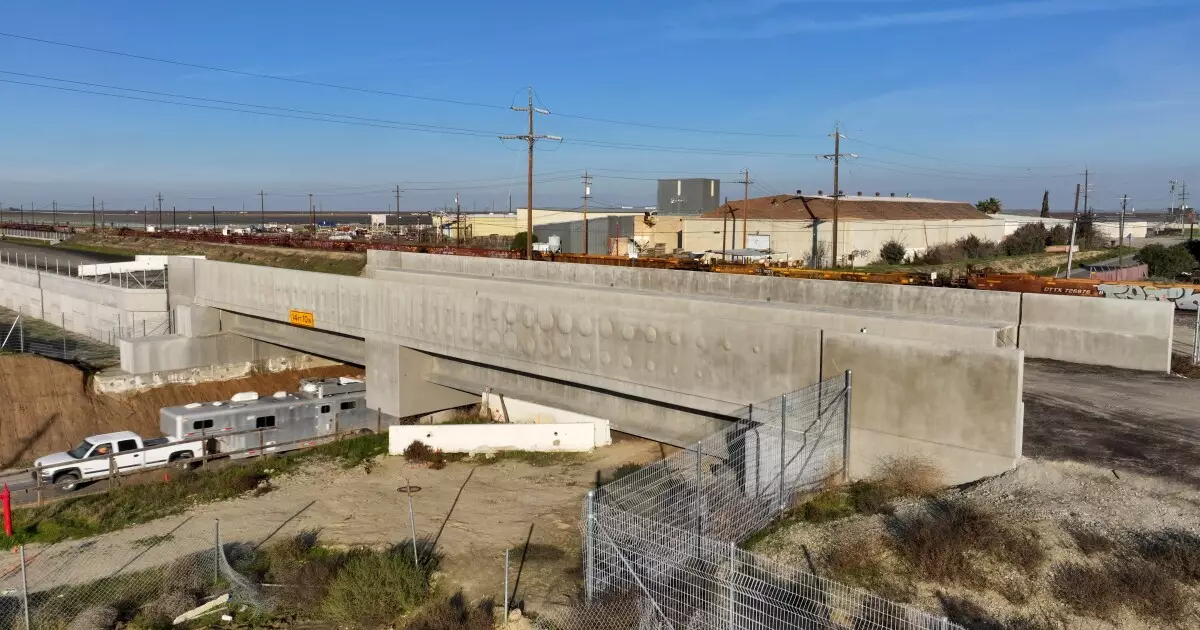The California High-Speed Rail project, once heralded as a transformative advancement in transportation, now stands at a crossroads of uncertainty and investigation. The Trump administration’s recent declaration to probe the financing of California’s beleaguered bullet train epitomizes the ongoing tension between state ambitions and federal oversight. As scrutiny mounts, the implications of this investigation reverberate through political, economic, and infrastructural landscapes.
Transportation Secretary Sean Duffy’s announcement, made during a press conference in Los Angeles, comes with a critical examination of the California High-Speed Rail Authority (CHSRA). The objective of this investigation is clear: to assess whether the CHSRA has upheld its commitments tied to receiving approximately $4 billion in federal grants. Duffy emphasized that accountability is paramount, stating, “We can’t just say we’re going to give money and then not hold states accountable to how they spend that money.” This sentiment reflects a broader stance within the federal government, prioritizing responsible allocation of taxpayer dollars.
The CHSRA has been under the microscope for years, with past accusations of mismanagement and financial discrepancies coloring public perception. The administration’s examination reflects a palpable frustration with what many view as persistent delays and ballooning costs associated with the project. Over the years, various reports have indicated that the projected budget for the rail line, originally estimated at $33 billion, has exploded to a staggering $128 billion. This astronomical figure, paired with a lack of clear completion timelines, fuels skepticism about the viability of the project itself.
Voter support for the bullet train has notably waned as delays have accumulated. Initially approved in 2008, the project was supposed to connect Los Angeles to San Francisco by 2020. However, years of project inertia have left the public disillusioned. As transportation experts and political leaders scrutinize the direction of this megaproject, questions arise regarding the distribution of resources and the project’s overall feasibility.
The investigation announced by Secretary Duffy aims to dissect these financial intricacies. The CHSRA’s reported expenditures—$15.7 billion spent to date versus its own asserted figure of $13 billion—produce further confusion. With the authority acknowledging a need for an additional $8 billion in federal support, the economic sustainability of the entire venture is now under severe scrutiny. The Trump administration appears to be positioning itself to determine whether further financial backing is justified in light of ongoing fiscal mismanagement concerns.
The California bullet train has transformed into a major political flashpoint, with Republican leaders frequently citing the project as a misallocation of resources. Their push for an investigation by the federal government has underlined a partisan divide regarding infrastructure spending. Duffy’s comments during the press conference, where he highlighted the lack of construction progress despite significant expenditures, encapsulate the frustrations shared by many critics of the project.
Moreover, the involvement of protesters advocating for the project reveals a societal desire for advanced public transportation despite the overwhelming skepticism. As Duffy noted while addressing demonstrators at the press event, their anger should be directed not at federal leaders, but at those within the CHSRA responsible for the project’s delays. This dynamic illustrates the struggle between community desires for modern infrastructure and the accountability demanded from governmental authorities.
As the federal investigation unfolds, the ramifications for California’s bullet train will be substantial. The CHSRA has emphasized its readiness for the inquiry, claiming that all financial dealings have been scrupulously accounted for and that the project has already spurred significant economic impacts—approximately $22 billion, mostly concentrated in the Central Valley. Yet, with the total project cost predicted to surpass $99 billion, the financial gap is staggering.
The CHSRA is also dependent on funds from California’s cap-and-trade program, adding another layer of complexity to the project’s funding dynamics. The uncertainty surrounding federal assistance, particularly with the administration’s intent to review past commitments, raises concerns about the future of this ambitious venture.
Amidst political contention and scrutiny, the California High-Speed Rail stands as a litmus test for federal-state relations in infrastructure investment. The review by the Trump administration brings both hope for accountability and trepidation over potential funding cuts. As stakeholders await the findings of the investigation, the fate of one of America’s most ambitious transit projects hangs in the balance, embodying the intersection of policy, finance, and public aspiration.


Leave a Reply